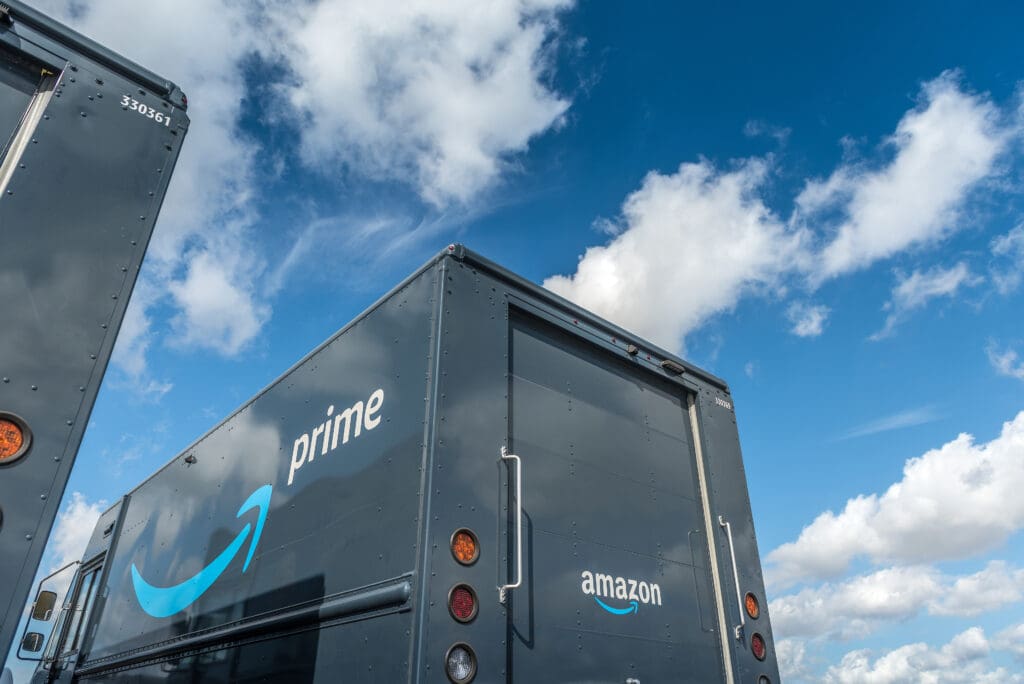In business, liquidity is the ace up your sleeve. Without it, your startup might miss out on critical growth opportunities, struggle with operational costs, or fail to adapt to market changes swiftly. If you’re looking to beef up your web-based retail or wholesale operation, one critical strategy is getting additional funds. But where do you find the right financing that won’t hinder your growth with stifling fund limits, lengthy processes, or high costs? Here, we’ve gathered some eCommerce funding options to help you grow and scale your business.
eCommerce Funding Solutions: Understanding Your Options
Explore these funding solutions for your eCommerce business, weigh the pros and cons, and find the right option for you:
1. Traditional bank loans
Traditional bank loans have a fixed interest rate and require regular repayments over a set period. Most are amortized loans, which means you pay the same amount every time.
Pros:
- Substantial eCommerce seller funding – Potential loan amounts can reach up to $5 million for small businesses.
- Lower annual percentage rates (APRs) – Traditional bank loans have APRs that often start in the single digits, from 3% to 8%.
- Longer repayment terms – A typical repayment period usually ranges from 5 to 7 years. However, this can vary based on the financial institution, the type of loan, and your credit standing.
- Establishes creditworthiness – Regular, on-time loan payments get recorded, which contributes to a strong business credit profile.
Cons:
- Bias toward a healthy credit history – Traditional banks often favor businesses with solid financial statements.
- Collateral requirement – You may be asked for collateral like real estate or equipment.
- Rigorous application process – Application processes are lengthy and require extensive documentation, including business plans, tax returns, etc.
- Lower approval rates for small or online businesses – Banks may view these businesses as higher risk due to their size or unproven business models.
2. Conventional lines of credit
Lines of credit offered by banks, credit unions, and other lending institutions allow you to access up to a specific amount of money as needed. You can repeatedly borrow from it provided you haven’t maxed out your credit limit.
Pros:
- Flexibility – Choose when to draw out the money and only pay interest on the amount used. Upon payment, the balance replenishes, so you get continuous access to funds.
- Higher credit limits – Avail of credit limits of up to 3 million dollars or more, depending on your company’s financial strength.
Cons:
- Risk of overspending – The flexibility and continuous access to funds can lead to borrowing more than you can comfortably repay.
- Variable interest rates – Rates tend to be variable and can adjust according to market conditions.
3. Crowdfunding platforms
Crowdfunding platforms are online services that allow startups to secure eCommerce startup funding as donations, or in exchange for rewards and equity. This method is particularly effective if your business has a unique or strong concept.
Pros:
- No credit checks – Bypass traditional gatekeepers like banks and venture capitalists and pitch ideas directly to the public.
- No repayment obligations – Reward-based crowdfunding doesn’t require financial repayment, unlike loans.
- Validation – You can access a broad audience to test consumer interest in your product or service and generate significant publicity.
Cons:
- No guarantee of success – Meeting your eCommerce funding target relies heavily on your campaign’s effectiveness and your project’s appeal.
- Potentially costly and labor-intensive – Crowdfunding requires marketing, constant updates, and rewards fulfillment.
- Intellectual property exposure – Sharing your idea or product on a public platform before securing intellectual property protection can be risky.
4. Equity-based financing
Equity-based financing involves raising capital from various sources, such as angel investors, venture capitalists, or private equity firms, by selling shares or stakes in a business.
Pros:
- No repayment schedule – This type of eCommerce funding doesn’t require monthly repayments, alleviating pressure on a growing business.
- Access to large capital – You can secure significant funding, potentially more than what you can get from other types of financing.
- Valuable partnerships and expertise – Investors often bring industry expertise, business connections, and additional resources beyond just capital.
- Distributed risk – You share the risk with investors, so you don’t have to repay them if your business doesn’t succeed.
Cons:
- Ownership dilution – Raising capital through equity financing means you have to give up some ownership and control in the company. This can result in conflicts if your investors have different views or strategies.
- Pressure for growth – Investors typically seek a high and swift return on their investment – To achieve this, you might rush decisions, overextend resources, or engage in unsustainable business practices.
- Exit strategy condition – The exit expectation from investors can force you into paths you might not be ready for or interested in, such as going public (IPO).
5. Inventory financing
Inventory financing is a type of short-term financing that advances a large portion of the cost of production to you even before your customers pay. You’ll find this type of eCommerce funding ideal if your business is experiencing unexpected growth or faces seasonal fluctuations.
Pros:
- Reduced opportunity costs – By freeing up cash flow tied up in inventory, you can allocate resources to other vital areas, such as marketing, product development, or expanding operations.
- Quick access to capital – The upfront cash allows you to take on larger orders than you could otherwise handle, supporting your growth and scalability. This also empowers you to negotiate better supplier terms.
- No standard collateral needed – The inventory or purchase orders act as collateral, making this option more accessible than traditional loans.
- Streamlined approval process – If you have a clear inventory record and established sales history, your approval process will be straightforward and fast.
Cons:
- Risk of overstocking – Relying too heavily on inventory as collateral can lead to the risk of overstocking, as this inventory can become outdated or lose value.
- High costs – The interest rates and finance fees can be burdensome and strain finances.
- Dependence on inventory quality and sales – The value and saleability of your inventory directly affect your financing terms and the amount of eCommerce startup funding.
How to Choose Your eCommerce Funding
When selecting funding for your eCommerce business, be guided by these essential considerations:
- Identify the exact reasons you need funding to target the right financing source.
- Determine the eCommerce startup funding you need by assessing the scale of your operations, business activities, and future growth plans.
- Look for providers who offer expedited application approval and fund disbursement.
- Pick an option that matches your financial capacity and won’t strain your profit margins.
- Scrutinize all the details, from the costs and repayment structures to the interest rates, potential hidden fees, and even any equity requirements.
- Go for a solution that offers flexibility on fund usage and repayment terms.
Drive eCommerce Success with Smart Inventory Funding
Why waste any growth opportunity just because your cash flow can’t keep up with your sales? Get the eCommerce funding you need to free up working capital and promptly stock up and meet customer demands. With eCommerce inventory funding, you can enhance customer satisfaction and strategically outpace the competition.
Looking for a reliable partner to fund your inventory needs and support your long-term growth? Look no further than Kickfurther—the innovative company that can help take your business to the next level.
Why Kickfurther?
With Kickfurther, eliminate stockouts, keep up with demand, and move into growth mode. Here’s what we offer:
- No immediate repayments: You don’t pay back until your new inventory order begins selling. You set your repayment schedule based on what works best for your cash flow.
- Non-dilutive: Kickfurther doesn’t take equity in exchange for funding.
- Not a debt: Kickfurther is not a loan, so it does not put debt on your books. Debt financing options can sometimes further constrain your working capital and access to capital—even lower your business’s valuation if you are looking at venture capital or a sale.
- Quick access: Get the capital you need when your supplier payments are due. Kickfurther can fund your entire order(s) each time you need more inventory.
Kickfurther puts you in control of your business while delivering the costliest asset for most brands. By funding your largest expense (inventory), you can free up existing capital to grow your business wherever you need it—product development, advertising, and expanding your team.
Interested to know how you can secure inventory funding from Kickfurther? Just follow these easy steps:
- Create your free business account.
- Complete the online application.
- Review a potential deal with one of our account reps to get funded in minutes.
Close your cash flow gap between paying your supplier and receiving future revenue with Kickfurther, and strike at opportunities as they arise. Join our funding marketplace today!






